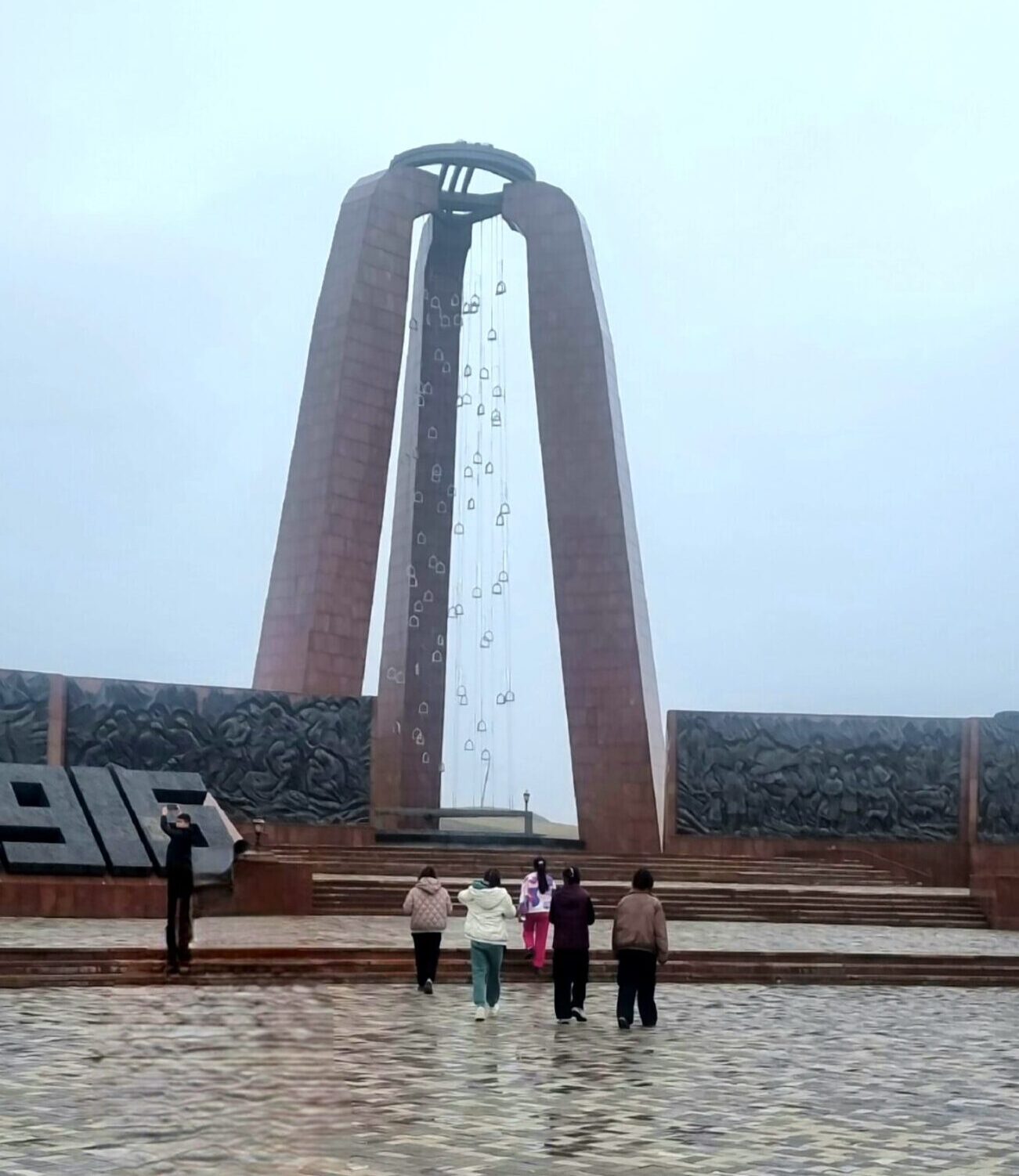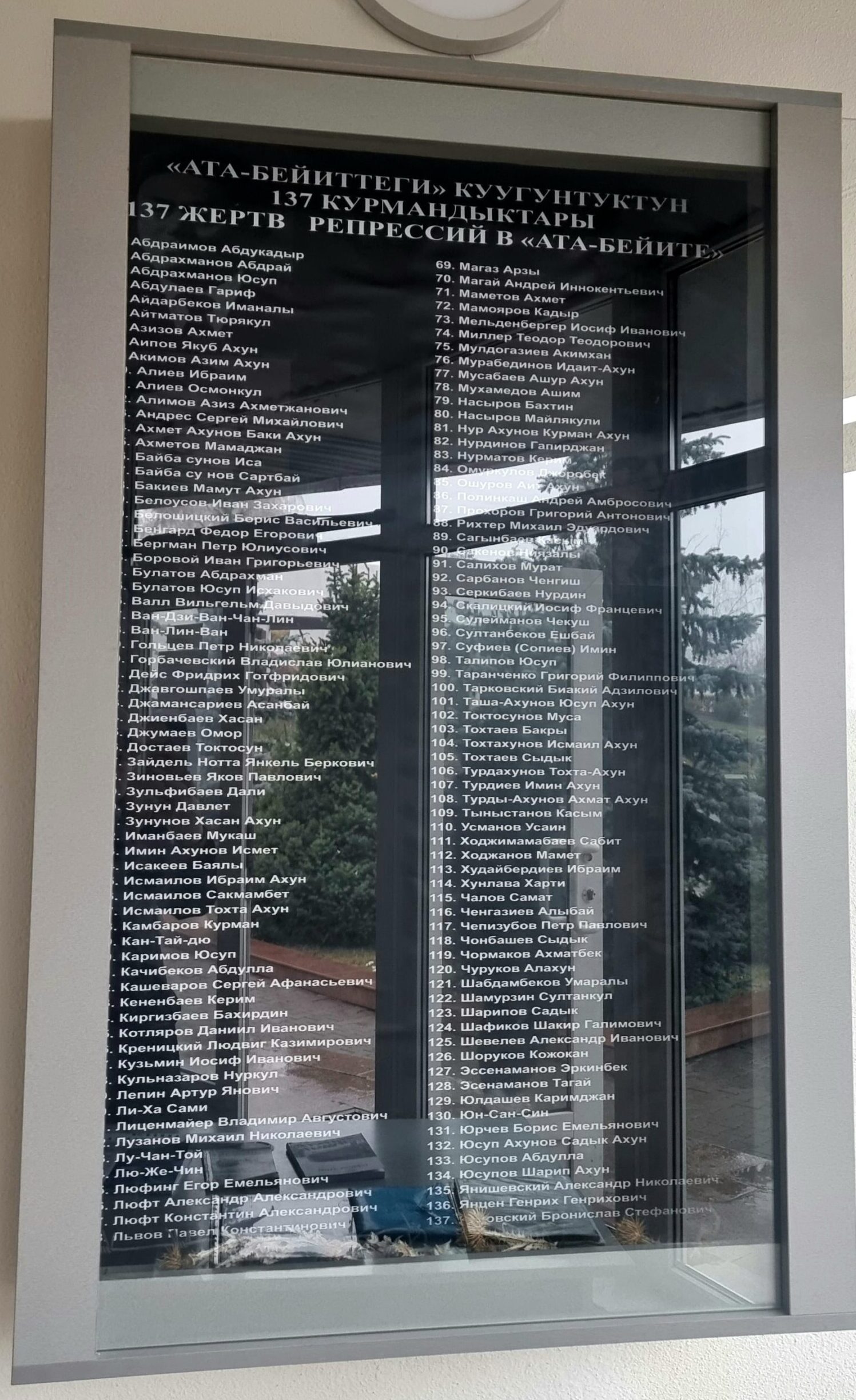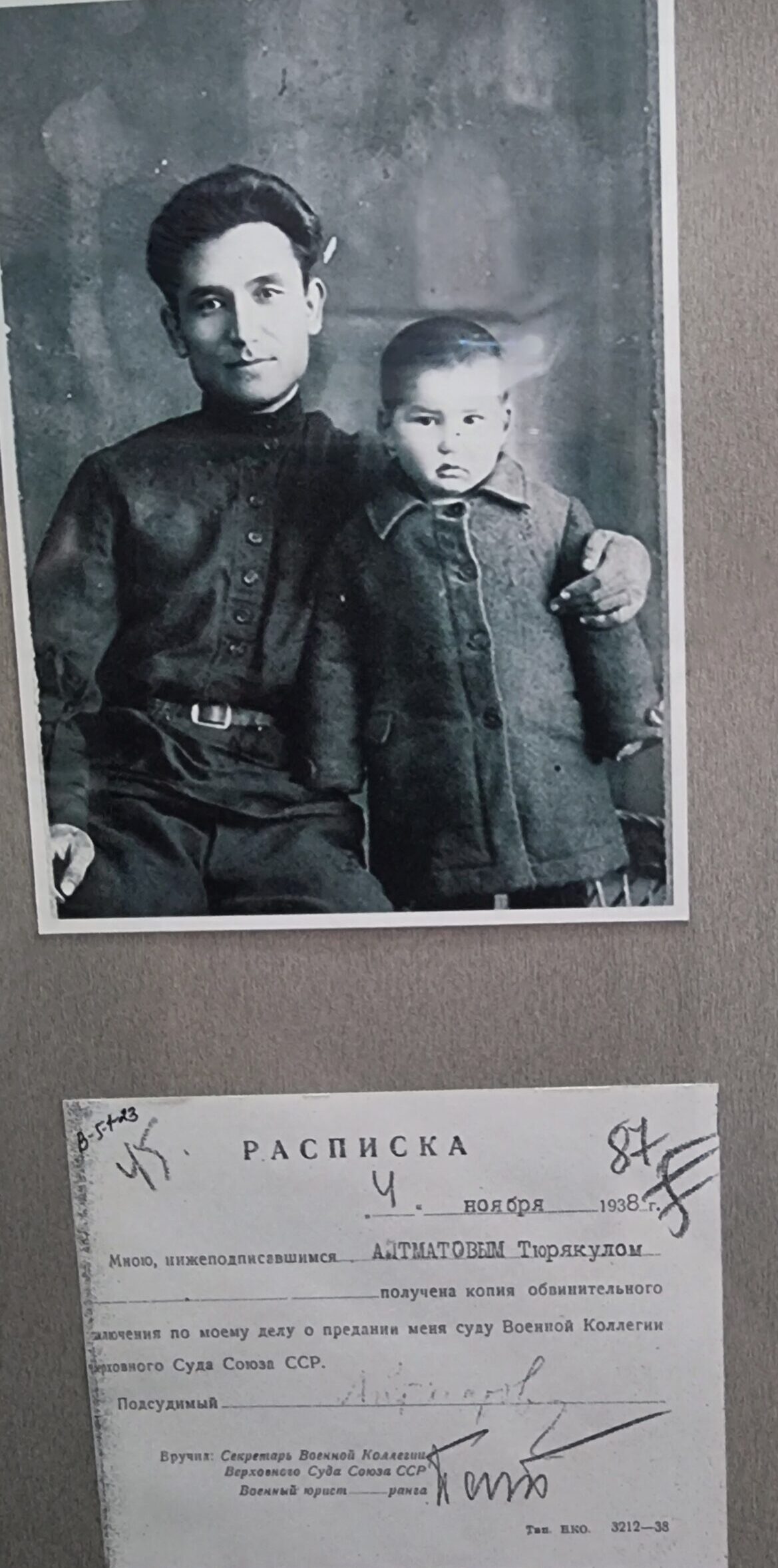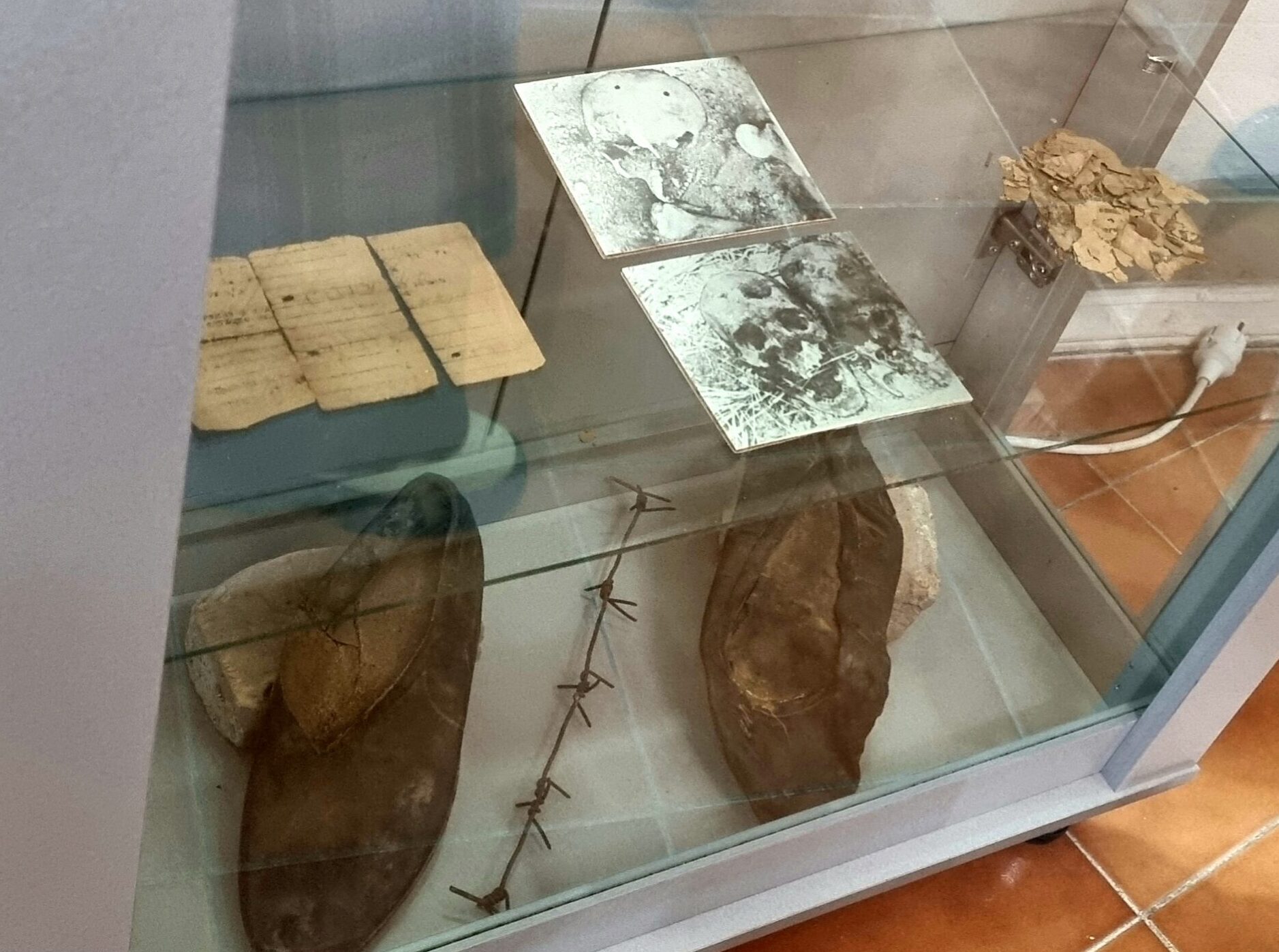ASTANA – The Ata-Beyit memorial complex, situated 30 kilometers from Bishkek, the capital of the Kyrgyz Republic, was established in 2000 to commemorate the victims of Soviet repression in the 1930s. Serving as a symbol of remembrance, it pays tribute to those who lost their lives and were interred in mass graves in the vicinity.

The Ata-Beyit memorial complex. Photo credit: The Astana Times.
Renowned author Chingiz Aitmatov bestowed the name to the complex, which translates to ‘fathers’ graves’.
Stalbek Nuryshov, a researcher at the memorial complex, highlights its objective to revive and safeguard the historical memory of crucial stages in the development of Kyrgyz statehood.
“The Urkun memorial, dedicated to those who perished in the tragic events of the 1916 national liberation uprising, is also located within the complex. In 2008, Aitmatov was laid to rest at Ata-Beyit. Another building is a complex commemorating the victims of the April 2010 events [referring to a coup],” he said.

The Urkun memorial, dedicated to those who perished in the tragic events of the 1916 national liberation uprising. Photo credit: The Astana Times.
Within the memorial complex, a museum showcases artifacts belonging to repression victims buried in the mass grave. The collection comprises coins, documents, photographs, newspaper articles, and autobiographies of the deceased.

The names of 137 victims, who were found in the mass grave. Photo credit: The Astana Times.
Unearthing the secrets of the mass grave
Nuryshov revealed that the tragic story of the mass grave unfolded through the efforts of Bolot Abdrahmanov who listened to the story of Bubura Abykanova.
“Abykanova was an eight-year-old girl in 1938 when her father worked as a guard at an institution in the village of Chon-Tash on the southern outskirts of Bishkek, where the Soviet People’s Commissariat for Internal Affairs (PCIA) employees rested,” he explained. “She recounted the story witnessed and narrated by her father about the shooting that occurred there in November 1938.”
Abykanova guarded this secret for 53 years, seeking trustworthy individuals with whom to share the story. Eventually, in 1990, Abdrahmanov, a captain in the National Security bodies, met the elderly lady and learned all the details. The investigation into the burial site commenced in spring, and remarkably, Abykanova remembered every detail. She pointed out where the PCIA employees rested, the location of their dining room, and the site of the parental house. There was a brick kiln nearly 300-400 meters away, according to her father, where the bodies of those shot were once thrown.

Torekul Aitmatov. Photo credit: The Astana Times.
“Excavations were carried out manually with shovels and at a depth of 40 centimeters, specific odors and fragments of clothing began to appear. The deeper the pit became, the more intriguing the discoveries, including fragments of indictments,” said Nuryshov.
The indictments against Zhusup Abdrakhmanov, then the chairman of the Council of People’s Commissars of the Kyrgyz Autonomous Soviet Socialist Republic (KASSR), and Torekul Aitmatov were discovered. This enabled the identification of the repressed individuals from archival materials of the National Security Committee.
In total, the excavation unearthed the remains of 138 people, including one woman, victims of the Stalinist regime, notable public figures and intelligentsia representatives of the Kyrgyz Republic. Widespread information suggests that representatives of 19 nationalities were among those repressed.
On Aug. 30, 1991, a state funeral ceremony commemorated the reburial of the victims of Stalin’s repressions found in Chon-Tash. The following day marked the independence of the Kyrgyz Republic.

Things that were found during excavation. Photo credit: The Astana Times.
The museum safeguards the belongings of the repression victims and items discovered during the excavation. It also presents two documentary films, recounting the story of the excavation process and the funeral ceremony, evoking emotions that are challenging to contain.
Adjacent to the museum, a memorial plaque on the right side bears the names of 137 victims, with the identity of one woman still unknown.


